#global ocean commission
Text


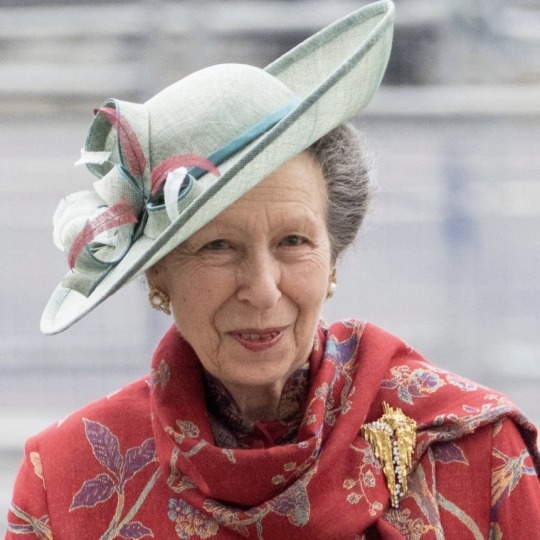






The Princess Royal’s Official Engagements in March 2024
01/03 In Dubai Princess Anne; 🇦🇪
As President of the Mission to Seafarers, visited Dubai Ports World in Port of Jebel Ali. 🚢
As President of the Mission to Seafarers, attended a Women in Shipping and Trading Conference Panel Discussion at Dubai Ports World Pavilion. 👩💼🛳️
Opened Donnelly Lines British Forces Headquarters at Al Minhad Airbase. 🛫
Called upon HH Sheikha Hind bint Maktoum bin Juma Al Maktoum (wife of the Vice President and PM of the UAE and Ruler of Dubai). 👑
Attended a Royal British Legion Reception on board the QUEEN ELIZABETH II floating hotel. 🍾
As President of the Royal Yachting Association, visited Dubai Offshore Sailing Club. 🛥️
As President of the Mission to Seafarers, this attended a Dinner at the One and Only Royal Mirage Hotel. 🍽️
02/03 Departed Dubai International Airport and returned to Heathrow Airport 🇦🇪✈️🇬🇧
04/03 As Guardian of the Chaffinch Trust, held a Management Team Meeting at Gatcombe Park. 🤝
As Guardian of Give Them A Sporting Chance, held a Management Team Meeting at Gatcombe Park. ⚽️
unofficial Along with the Duke of Kent (President of the RNLI), Sir Tim (Vice President of the RNLI) attended a Service of Thanksgiving to commemorate the 200th Anniversary of the RNLI at Westminster Abbey. 🛟
05/03 As Patron of Livability, visited New Court Place, to mark its 180th Anniversary. 🦼
Opened First Garden Cities Homes' Sheltered Housing Scheme at John Coxall Court in Letchworth Garden City. 🏡
As Patron of the Butler Trust, visited HMP/Young Offenders Institute Aylesbury. 🔗👮
06/03 On behalf of the King, held two investiture ceremonies at Windsor Castle. 🎖️
07/03 As President, attended the 32nd National Equine Forum at the Institution of Mechanical Engineers. 🐴
As Grand Master of the Royal Victorian Order, attended Evensong and a Reception at The King’s Chapel of the Savoy. ⛪️🎖️
08/03 As Chancellor of the University of London, visited King’s College London’s Portable MRI Project at the Denmark Hill Campus. 🩻
As Patron of Save the Children UK, attended the International Women’s Day Luncheon at Bluebird on Kings Road. 👭💪
10/03 Attended the Global Fraud Summit at the Guildhall in London. 💻👾
11/03 Attended the Commonwealth Day Service at Westminster Abbey alongside The Queen, The Prince of Wales, The Duke and Duchess of Edinburgh, The Princess Royal, The Duke and Duchess of Gloucester and The Duke of Kent. 🌎🌍🌏
Attended a Commonwealth Day Reception at Westminster Abbey. 🌍🥂
With Sir Tim As Past Master of the Worshipful Company of Butchers, attended the Annual City Food and Drink Lecture at Guildhall. 🍽️🍾
12/03 With Sir Tim Attended a luncheon on board Hebridean Princess to mark its 60th Anniversary in Greenock. 🥪
With Sir Tim Visited Peel Ports Group Limited Greenock Ocean Terminal. 🛳️
13/03 unofficial Attended Style Wednesday at Cheltenham Festival. 👒
14/03 unofficial Attended St. Patrick’s Thursday at Cheltenham Festival. ☘️
15/03 With Sir Tim Attended Gold Cup Friday at Cheltenham Festival. 🏆
16/03 With Sir Tim As Patron of the Scottish Rugby Union, attended the Six Nations Rugby Match between Scotland and Ireland at Aviva Stadium in Dublin. 🏴🇮🇪🏉
18/03 As Patron of Save the Children UK, attended the International Financial Review Annual Awards Dinner at the Grosvenor House Hotel in London.🏅
19/03 As Patron of Sense, opened Sense Hub Loughborough.🦻👨🦯
On behalf of The King, with the Duchess of Edinburgh, held a Reception for Korean War Veterans at Buckingham Palace. 🪖
As Patron of the Butler Trust, held the Annual Awards Ceremony at St James’s Palace. 🏆
With Sir Tim As President of the Royal Commission for the Exhibition of 1851, attended a Presidential Dinner at Fishmongers’ Hall. 🐟🍽️
20/03 Held a morning and an afternoon investiture ceremony at Windsor Castle. 🎖️
21/03 As President of the Benenden Society and Founders’ Patron of Benenden School, attended the Centenary Service in Canterbury Cathedral. ⛪️👩🦰
Attended the Commonwealth Youth Orchestra and Choir Presentation Concert at Spencer House. 🎻🎼
22/03 Opened the new North Atlantic Treaty Organisation Allied Rapid Reaction Corps Headquarters Accommodation at the Officers’ Mess in Imjin Barracks. 🌊
Visited the Joint Casualty and Compassionate Centre and Ministry of Defence Medal Office at Innsworth House in Imjin Barracks. ⛑️🎖️
As Patron of Stroud Hospital League of Friends, visited Stroud Maternity Unit. 🏥👶
25/03 Visited MacRebur Limited. 🏴🛣️
Visited the Lockerbie Air Disaster Memorial at Lockerbie Garden of Remembrance. 🌹👼🏻
As President of the Scotch Chef’s Club, opened Browns Food Group’s new facilities at Kelloholm Industrial Estate. 🐄
As Royal Patron of Friends of TS Queen Mary, attended a Reception at the Hilton Glasgow. ⛴️🥂
26/03 Opened the Rural and Veterinary Innovation Centre at Scotland's Rural College in Inverness. 🩺🐑
As Chancellor of the University of the Highlands and Islands, attended the Integrated Land Use Conference. 🚜🧑🌾
As Royal Patron of the Royal Zoological Society of Scotland, visited the Saving Wildcats Project at Highland Wildlife Park in Kincraig. 🐯🦁
As Patron and Honorary Member of the Grand Antiquity Society of Glasgow, attended a Dinner at the Trades Hall of Glasgow. 🏴📜
Unofficial Sir Tim, as Chair of Trustees, attended the opening of the Adani Green Energy Gallery at the Science Museum 🌍🍃💚
31/03 unofficial With Sir Tim Attended the Easter Mattins service held at St George’s Chapel in Windsor Castle ⛪️��
Total official engagements for Anne in March: 49
2024 total so far: 134
Total official engagements accompanied by Tim in March: 6
2024 total so far: 29
FYI - due to certain royal family members being off ill/in recovery I won't be posting everyone's engagement counts out of respect, I am continuing to count them and release the totals at the end of the year.
#hardest working royal 🫡#a busy bee#princess anne#princess royal#tim laurence#timothy laurence#always there to support his wife 🥰#march 2024#aimees unofficial engagement count 2024
45 notes
·
View notes
Text
Imagine the WBP watching you adjust to their rustic lifestyle

Commissioned by: @ceylon-morphe286
Thanks for the commission btw ❤️️

You: *had washed onto the Moby Dick during a storm*
Whitebeard: *takes one look at your pitiful wet shaking and sniveling form, and decides to take pity on you and leaves you to his 1st and 2nd commands *
Ace: *helping you put sheets on your bunk, when he notices your phone on the night stand as it vibrates* What's that thingy?
You: oh it's just my phone.
Ace: *blinks at you in confusion*
You: my smartphone, ya know, like a cell phone.
Ace: You keep saying it like I know what that is.
You: you get calls and messages, and use it to talk to people from a distance.
Ace: oh, like a den den mushi! I've never seen one with a shell that shape, where's the snail though?
You: there's no snail, what on Earth are you talking about?
Ace: No, what are you talking about?
After figuring out what was going on
You: So, I'm not just displaced in space, but also in time....
Marco: what does that even mean?
You: *Sighs because you don't want to explain it.* It's nothing... cute snail by the way.
Ace: If your calls aren't done with a den den mushi, how does it work?
You: well, I'm not entirely sure, but it's complicated enough that I think the fact your culture uses snails is.... rather quaint.
Whitebeard: *watching you as your attention remains glued to the screen.* for something that just does calls, you're rather obsessed with it.
You: oh it does a bunch more, like I can take pictures and record footage. Like here, *snaps a picture of Whitebeard*
Whitebeard: *winces from the flash*
You: hehe, look it *shows him a picture of himself looking straight up his nose with a dog filter over it*
Whitebeard: I'm hideous, throw it away immediately.
The next morning
Ace: See I told you I could carry four crates cat once!
You: *recording him* oh wow, look at that.
Ace: *rapidly shifts his body to account for the boxes wobbling, and he has to take a wide step, ripping the crotch of his pants*
You: *learns Ace do not wear chonies *
Ace: *tries to correct himself, so he wasn't swinging in the breeze, and ends up dropping the crates, and drops the crates.*
You: here cover yourself with this. *Hands him the blanket you were using as a shawl*
Ace: *wraps it around his waist just in time*
Marco, Izou, and Thatch: *comes check out the loud crash*What happened?
Izou: *runs over to save a tin of matcha from rolling into the ocean* hey, you almost cost me a week's worth of tea!
Thatch: *grumbles* here we go with his tea again.
Izou: it is tea, you peanut head!
Thatch: tea is leaves, that is powder!
Ace: *looks over at you, and remembers you were recording him before he fell* to delete it.
You: delete what?
Ace: your phone.
You: ohh *wants to save it for possible black mail for later*... I accidentally turned it off, see, so it probably didn't save the video*shows him the dark screen*
Ace: turn it back on, and check.
You: hmm, I actually shouldn't, it has limited power, and it was already pretty low.
Marco: what powers it?
You: electricity, which is like domesticated lightening.
Marco: not easy to come by, from the sounds of it.
You: not here, no. So I should turn it off and use it less.
During breakfast
Izou: why do none of you know how to make a decent cup of tea, I'm not even asking for proper.
You: *hand him a piping hot cup of matcha*
Izou: *sighs and reluctantly accepts it,* wait... this is perfect, how do you know how to make matcha?
You: I read a lot, plus I'm used to a broader global community letting me see into different cultures.
Izou: on that enter nets you mentioned last night?
You: yep on the internet, I'm used to being able to have most of human knowledge at my fingertips.
Marco: and having a constant source of stimulation, that's why you keep picking at yourself when you go without doing something for a few minutes. Speaking of which, stop it *smacks your hand way from your face*
You: yep.
Later that week
You: *pushing yourself along the floor on your back and whining* I'm bored.
Ace: *throws a book at you because you've been whining nonstop to him*

#one piece#one piece x reader#one piece imagine#whitebeard#op whitebeard#edward newgate#marco the phoenix#marco the pineapple#one piece izou#thatch one piece#fire fist ace#portgas d ace#from the depths of the dragon's hoard#tma original#tma commissions#10/16/22#no beta we die like men
634 notes
·
View notes
Text
Lai Ching-te will be Taiwan’s next president after winning Saturday’s election, ensuring that the ruling Democratic Progressive Party (DPP) will remain in power and dealing a rebuke to Beijing’s wishes for a more China-friendly administration. In the days before the election, Taiwanese voters were flooded with information. Look up, and they saw posters on buses and buildings declaring the virtues of all three candidates and their running mates. Look down, and they got a stream of news, gossip, and opinions from their phones—not all of it true and much of it likely stirred up by internet trolls in China.
Taiwan is one of the world’s most digitally connected countries, and on social media, false posts and videos are reaching thousands of people before platforms can take them down. TikTok was flooded with disinformation accusing Lai of sex scandals, tax evasion, and conspiring to start a war with China. His vice presidential pick, Hsiao Bi-khim, has been accused of secretly holding U.S. citizenship. So has the running mate of Ko Wen-je, the third-party candidate livestreaming his spoiler campaign on YouTube and TikTok.
Researchers have attributed much of the false information to Chinese actors—and rather than blasting pro-China views to Taiwanese voters, they’ve focused on amplifying negative stories about Taiwan’s domestic politics and wedge issues, such as the role of the United States, with the intent of polarizing Taiwanese society.
“Beijing’s cognitive warfare is evolving,” said Tzu-wei Hung, a scholar at Taiwan’s Academia Sinica. “Negative narratives are effective not because they will change the election result but because they intensify social conflicts and create a vicious cycle of distrust and hate.”
Taiwan faced a similarly toxic disinformation environment before the 2020 presidential election, and at the time, it fought back—hard. Officials frequently accused China of being behind wide-ranging disinformation campaigns. Police summoned private citizens for posting false stories and levied fines in some instances for violating a law preventing public disorder. The National Communications Commission (NCC) issued a series of fines to the pro-China TV station Chung Tien Television (CTi) for broadcasting false information. Eventually, in December 2020, CTi was taken off the air after the NCC declined to renew its broadcast license.
The government learned quickly that none of it worked.
“If you want to curb disinformation by legal measures, it’s difficult and dangerous,” said Yachi Chiang, a professor at National Taiwan Ocean University specializing in intellectual property and tech law. It “opens a pathway for the government to control speech.”
Taiwan has always been a banner holder of free speech in Asia. In 2020, however, DPP legislators were panicked over the prospect of Chinese election-meddling. President Tsai Ing-wen was riding a wave of global popularity by supporting the Hong Kong pro-democracy protests, which had broken out months earlier, giving Beijing every reason to remove her from office or disrupt her legislative majority.
Tsai was reelected in a landslide—but not because her government cracked down on fake news. Many fines levied under the Social Order Maintenance Act, an existing law that was utilized against disinformation peddlers, have since been overturned by the courts.
The NCC’s crusade against CTi hasn’t gone much better. Opposition politicians used its removal from the airwaves to hammer DPP politicians as enemies of free speech. The NCC, at the time, argued that CTi had failed to adhere to basic fact-checking standards and could not ensure impartiality from outside influence—a clear reference to its owner, the domestically unloved Tsai Eng-meng, a snack food tycoon with extensive business interests in China and a track record of pro-unification statements.
In May 2023, a Taipei court ruled against the NCC’s decision to shut down CTi, saying it had failed to provide adequate reasoning for its decision. At present, CTi remains off the air—and its request to have its license renewed by the court was rejected—but the NCC has been ordered to review its own decision and provide stiffer reasoning. “You need something stronger to sustain your ruling,” Chiang said.
Taiwanese authorities have successfully prosecuted citizens who received funding from China to publish fake news. But in general, politicians began to realize that moving through the judicial system “would be slow,” Chiang said. “The decisions might be disappointing. The results might be less effective.”
Just after the 2020 election, however, Taiwan’s government found a better way to combat disinformation when the COVID-19 pandemic swept the globe. Taiwan was the first country to alert the World Health Organization of the presence of a coronavirus in Wuhan and then introduce travel restrictions and quarantine protocols.
Public officials also began releasing accurate, easily digestible information as quickly as possible, before disinformation could reach people’s phone screens. Chen Shih-chung, the health minister at the time, held press conferences each afternoon, earning him the nickname “Minister Clock.” His ministry, along with the social media accounts of Tsai and Premier Su Tseng-chang, posted colorful memes sharing data on the pandemic and extolling the virtues of masking and hand-washing.
It was a triumph of public transparency that paid off handsomely. Taiwan saw just 823 COVID-19 cases in all of 2020, despite its close proximity to the pandemic’s epicenter.
It also helped politicians realize that “you can’t count on laws to tackle disinformation,” Chiang said. “You need to create your own information.”
“Free speech is not the cost but the key to counteract disinformation,” said Hung, who noted that in 2022, Freedom House found that countries that protect free expression and have robust civic society groups do a better job at mitigating false information.
Taiwan has tried other forms of a more open approach. Although it banned the Chinese-owned video platform TikTok from government apps in 2022, Taiwan has not followed countries such as India in issuing a general proscription on the app despite concerns that Beijing can influence content. About one-quarter of Taiwan’s population uses the app, including a host of popular influencers and celebrities.
Taiwan also has a network of strong civic fact-checking organizations that work with social media companies to combat disinformation. One of them, MyGoPen, recently started collaborating directly with TikTok to correct false posts about the 2024 election.
No matter who is in power, politicians seem to acutely understand that the best way to combat false information about them is to push out their own narratives on social media. “If you are popular on the internet, that’s more important than [popularity on] traditional media channels,” Chiang said.
Lai’s win on Saturday is not an outright victory against disinformation itself—both Chinese and domestic actors will surely continue to create confusion and distrust whenever they can. It did, however, show that Taiwanese voters can’t easily be swayed, as long as public officials do their part to communicate rapidly, positively, and honestly.
25 notes
·
View notes
Text
Excerpt from this story from EcoWatch:
In a historic win for a group of small island nations — including the Bahamas, Antigua and Barbuda — the International Tribunal for the Law of the Sea (ITLOS) has found that human-produced greenhouse gas emissions absorbed by the world’s oceans are considered marine pollution.
In its first ruling related to climate, the tribunal — a United Nations maritime law court — advised that countries are obligated to safeguard marine environments by doing more than is required by the 2015 Paris Agreement, reported Reuters. Many small island nations are threatened by rising sea levels due to global heating.
“As the legal guardian of the Ocean Treaty, ITLOS has taken a critical first step in recognising that what small island nations have been fighting for at the COP negotiations for decades is already a part of international law,” said professor Payam Akhavan, the legal representative of the Commission of Small Island States on Climate Change and International Law (COSIS), as Euronews Green reported. “The major polluters must prevent catastrophic harm to small island nations, and if they fail to do so, they must compensate for loss and damage.”
COSIS — a group of nine small island nations in the Caribbean and Pacific Ocean that are threatened by sea-level rise — requested the opinion of ITLOS.
Though the decision is an “advisory opinion,” it should provide precedent for future cases.
“What happened today was that the law and science met together in this tribunal, and both won,” said Cheryl Bazard, European Union of the Bahamas ambassador, as reported by Reuters.
In its opinion, ITLOS said nations must monitor and reduce emissions and specified what their environmental impact assessments need to contain.
The court also said goals for reducing greenhouse gas emissions are required to be objectively set and based on relevant international standards and rules, as well as the best available science — a higher standard than the Paris Agreement.
“To those that would hide behind the weaknesses of international climate treaties, this opinion makes clear that compliance with the Paris Agreement alone is not enough,” said Nikki Reisch, Centre for International Environmental Law director, as Reuters reported.
#marine pollution#International Ocean Tribunal#climate change#marine ecology#International Tribunal for the Law of the Sea (ITLOS)
10 notes
·
View notes
Text

Article by: noel kirkpatrick (September 5 2018)
Call it Apocalypse 2040.
In the early 1970s, a computer program called World1 predicted that civilization would likely collapse by 2040. Researchers from Massachusetts Institute of Technology (MIT) had programmed it to consider a model of sustainability for the world.
The prediction has resurfaced because Australian broadcaster ABC recirculated a 1973 newscast about the computer program. The program's findings, however, never really went away, as its results have been re-evaluated over the nearly 50 years since they first appeared.
The bad news for us is that the model seems to be spot-on so far.
The computer model was commissioned by the Club of Rome, a group of scientists, industrialists and government officials focused on solving the world's problems. The organization wanted to know how well the world could sustain its rate of growth based on information that was available at the time. World1 was developed by Jay Forrester, the father of system dynamics, a methodology for understanding how complex systems operate.
When deciding the fate of civilization, the program considered several variables, including pollution levels, population growth, the availability of natural resources and global quality of life. These factors were considered in tandem with one another as opposed to separately, following the Club of Rome's perspective that the world's problems are interconnected.
Such an approach was novel in the 1970s, even if the forecast World1 produced wasn't intended to be "precise." The program produced graphs that demonstrated what would happen to those metrics in the future, without even accounting for things like climate change. The graphs all indicated a downward trajectory for the planet.
According to the 1973 ABC segment, World1 identified 2020 as a tipping point for civilization.
"At around 2020, the condition of the planet becomes highly critical. If we do nothing about it, the quality of life goes down to zero. Pollution becomes so seriously it will start to kill people, which in turn will cause the population to diminish, lower than it was in the 1900. At this stage, around 2040 to 2050, civilized life as we know it on this planet will cease to exist."
This was not the end of the model. In 1972, the Club of Rome published "The Limits to Growth," a book that built off the work of World1 with a program called World3, developed by scientists Donella and Dennis Meadows and a team of researchers. This time the variables were population, food production, industrialization, pollution and consumption of nonrenewable natural resources.
"The Limits to Growth" pushed the collapse of civilization to 2072, when the limits of growth would be the most readily apparent and result in population and industrial declines.
Criticism of the book was nearly immediate, and harsh. The New York Times, for instance, wrote, "Its imposing apparatus of computer technology and systems jargon ... takes arbitrary assumptions, shakes them up and comes out with arbitrary conclusions that have the ring of science," concluding that the book was "empty and misleading."
Others argued that the book's view of what constitutes a resource could change over time, leaving their data shortsighted to any possible changes in consumption habits.
The tide for the book's finds have changed over time, however. In 2014, Graham Turner, then a research fellow at the University Melbourne's Melbourne Sustainable Society Institute, collected data from various agencies within the United Nations, the National Oceanic and Atmospheric Administration and other outlets, plotting their data alongside the findings of the World3 model.
What Turner found that was that the World3 model and then-current statistical information tended to coincide with another, up to 2010, indicating that the World3 model was onto something. Turner cautioned that the validation of World3's model didn't indicate "agreement" with it, largely due to certain parameters within the World3 model. Still, Turner argued that we were likely on "cusp of collapse" thanks to a few different factors, in particular what Turner called the end of peak easy oil access.
Writing in The Guardian, Turner and Cathy Alexander, a Melbourne-based journalist, explained that neither the World3 model or Turner's own confirmation of it signaled that the collapse was a guarantee.
"Our research does not indicate that collapse of the world economy, environment and population is a certainty," they wrote. "Nor do we claim the future will unfold exactly as the MIT researchers predicted back in 1972. Wars could break out; so could genuine global environmental leadership. Either could dramatically affect the trajectory.
"But our findings should sound an alarm bell. It seems unlikely that the quest for ever-increasing growth can continue unchecked to 2100 without causing serious negative effects – and those effects might come sooner than we think."
#urban decay#decay#ruins#remnants#abandoned#end of days#apocalypse#apocalyptic#dystopia#dystopian#postapocalypse#postapo#postapocalyptic#postapoc#fantasy#scifi#art#wastelands#wasteland#doomsday#preppers#doomsday preppers#fallout#postnuclear#biohazard#pandemic#outbreak#survivalist#bugoutbag#aesthetic
91 notes
·
View notes
Text
One MORE: Clocktown is LonLon is Hyrule
What happened to the citizens of Hyrule Castle in z64? Well, they simply left. When Death Mountain started erupting, the King out of commission, and Zelda missing.
The townsfolk simply left, either temporarily staying at Kakariko Town, or simply moving elsewhere.
And what is the nearest safe haven if Ganondorf is *also* out of the picture?
Lon Lon ranch. That square plot of land I talked about before looking like a particular castle from a particular Twilight Zelda game.
My Theory Goes; after the events of Z64, and being sent back to the past by elder Zelda, Link is given a specific set of instructions to give to her childhood self (That other theory that I set forth before, was for the whole section of the fanbases that is *obsessed* with the Ben drowned and Link Died theories. The one I don't particularly like.)
That unstoppable volcanic eruption causes global warming and rising tides. (And the Zora in Z64s Zoras Domain aren't River Zora, they're Ocean Zora. River Zora are closer to reverse mermaids in the series lore, and they're not friendly most of the time. See z1-3. And the Oracle of Seasons which says it outright.)
Which means that *lake hylia* might just be a basin left over from very low tides. (And if you think the falling moon really is the moon, the reason for rising tides, and in the wisdom timeline which doesnt have Link, causes eternal flooding. And in the MM timeline with Link, stops it.)
(I am not gonna do the entire map examination since all I have is my phone)
The Deku Scrub temple is in a swamp, caused by the flooding, which brought prosperity to the monkeys and the Deku scrubs (The monkeys could be monkeys, or that particular installment of Koroks, which isn't clarified, but when the Koroks/Kokiri are missing, there always seems to be monkeys...)
So what do villagers do after fleeing both the castle and Kakariko because of the impending doom Mt. Pompei brings?
Start building. Which explains why the construction workers are nonstop busy building housing for displaced people. And why the Bomber Kids seemingly don't have parents. (They were lost or injured themselves due to Ganon AND the eruption)
But, if that *is* the case, why doesn't those giants help protect Hyrule?
And my answer is that; They're too powerful to care about a single kingdom, they come and go.
But when it comes to the world's destruction, that's when they care.
That was kind of the entire story of MM's Skull Kid. Feeling abandoned by the greater powers their friends had. And leaving the Kingdom of Hyrule to die.
But which is more important; one kingdom, or every kingdom?
7 notes
·
View notes
Text
Centuries of industrial whaling left only a few hundred Antarctic blue whales alive, making it almost impossible to find them in the wild.
New research suggests the population may be recovering. Australian scientists and international colleagues spent two decades listening for their distinctive songs and calls, and have found the whales – the largest animals ever to have lived – swimming across the Southern Ocean with growing regularity.
Analysis of thousands of hours of audio, collected with underwater microphones and secondhand military-issued submarine listening devices, suggests whale numbers are stable or on the rise, according to the Australian Antarctic Division senior research scientist Brian Miller.
“When you look back to before this work was started by the AAD, we really just had so few encounters with these animals – and now we can produce them on demand,” Miller said.
“We can tell you where they’re frequenting, we can tell you that we’re hearing them more often. So that’s progress.”
The whales were heard increasingly often in the Southern Ocean from 2006 to 2021, according to a new paper collating the findings of Australian and international researchers’ seven voyages across the period.
“Either they’re either increasing in number or we’re increasing in our ability to find them, and both of those things are good news,” Miller said.
The Antarctic blue whale nearly became extinct before whaling’s decline in the mid-20th century, with the most latest estimates from 1998 suggesting there were fewer than 2,000 alive.
Researchers have spent hours listening for repeating songs about 20 seconds long, termed Z calls, along with shorter, higher-pitched D calls, in an effort to track and study the critically endangered species.
“We think the message is: ‘I’m a blue whale, I’m here,’” Miller said.
“If you think about … us almost wiping them out, and extinction, then it becomes more poignant to think about them saying, ‘I’m still here, here I am.’”
The scientists travelled nearly 150,000km across the Southern Ocean tracking the whales’ appearances around Antarctica. Other Australian researchers say the study’s geographical and temporal range provides a rare insight into the state of the species.
“This is the first indication of what’s happening with Antarctic blue whales … for a good 20 years,” said Prof Robert Harcourt, a marine ecologist at Macquarie University. “All of the earlier work was based back in the 1950s when we were killing them.”
A Griffith University whale researcher, Dr Olaf Meynecke, said: “Having so many years [of data] over several seasons … and then having it over thousands of kilometres – that’s really unique.”
The whales spend half the year in Antarctic waters but are global travellers – heading north towards Australia, South Africa, South America and even across the equator.
Their distribution means scientists around the world have been drawn to the project, which Miller hopes will be a step forward for the International Whaling Commission’s conservation efforts.
“Only an international collaborative effort is going to be able to piece together the puzzle of where they are and whether they’re recovering,” he said.
2 notes
·
View notes
Text
Iceland cancels commercial whaling this season on animal welfare grounds, hailed as ‘a major milestone in compassionate whale conservation’ by HSI / Europe
Minister Svavarsdóttir ends decades of senseless whale killing and begins a new chapter in Iceland’s relationship with whales
Humane Society International / Europe
20 June 2023
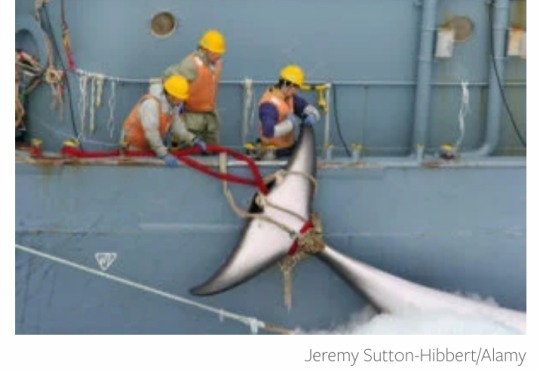
BRUSSELS ― As news breaks that Iceland has cancelled this season’s commercial whaling on animal welfare grounds, global animal protection charity Humane Society International says it is thrilled and relieved at the announcement that will spare hundreds of whales from agonising deaths.
It urges the Icelandic government to make it a permanent ban.
Food, Agriculture and Fisheries Minister Svandís Svavarsdóttir announced that Iceland’s whaling vessels will not kill any whales this season due to the conclusion that “the fishing method used when hunting large whales does not comply with the law on animal welfare.”
The suspension lasts until August 31st, which effectively cancels this season’s whale killing.
The minister’s statement continues:
“It is necessary to postpone the start of the whaling season so that there is room to investigate whether it is possible to ensure that the hunting is carried out in accordance with the provisions of the Animal Welfare Act.”
Ruud Tombrock, HSI / Europe’s executive director, said:
“This is a major milestone in compassionate whale conservation.
Humane Society International is thrilled at this news and praises Minister Svavarsdóttir for ending the senseless whale killing, which will spare hundreds of minke and imperilled fin whales from agonising and protracted deaths.
There is no humane way to kill a whale at sea and so we urge the minister to make this a permanent ban.
Whales already face so many serious threats in the oceans from pollution, climate change, entanglement in fish nets and ship strikes, that ending cruel commercial whaling is the only ethical conclusion.”
The announcement follows the Minister’s op-ed last year in which she said she saw little reason to permit whaling after 2023.
Publication last month of an independent report by the Icelandic Food and Veterinary Authority ― commissioned by the Minister ― revealed some whales killed in Icelandic hunts had taken up to two hours to die, with 41% of whales suffering immensely before dying for an average of 11.5 minutes.
Kitty Block, CEO of Humane Society International, said:
“For those of us who have been campaigning for many years to end commercial whaling, to see the day that Iceland decides to stop killing whales and retire its harpoons for good, is truly historic.
Economic factors have certainly played a significant role in the demise of this cruel industry - with little demand for whale meat at home and exports to the Japanese market dwindling - but it is the overriding moral argument against whaling that has sealed its fate.
Harpooning these magnificent giants not only causes unjustifiable suffering to those whales who are killed but also unimaginable distress to the rest of their pod who witness their family members being chased and slaughtered.
Iceland is already one of the best places in the world to go whale watching, and the country stands to attract even more ecotourists now that it has abandoned whaling forever.
The world now looks at Japan and Norway as the only two countries in the world to still mercilessly kill whales for profit.”
FAST FACTS:
The International Whaling Commission agreed to enact a global moratorium on all commercial whaling in 1986.
Iceland left the IWC in 1992 but returned in 2002 with an exception to the moratorium, despite objections from multiple nations.
Since re-joining the IWC, Iceland had killed more than 1,500 whales, including fin whales.
Iceland suspended hunting fin whales in 2016 due to a declining market for whale meat in Japan.
Hunting resumed for the 2018 season when 146 fin whales were killed, including a pregnant female and a rare fin-blue hybrid whale, plus six minke whales.
A single minke whale was killed from 2019-2021, and 148 fin whales in 2022.
Fin whales are classified by the International Union for the Conservation of Nature as globally vulnerable to extinction despite decades of recovery since the commercial whaling moratorium.
🤍🐳🤍
#International Whaling Commission#International Union for the Conservation of Nature#Humane Society International#Iceland#commercial whaling ban#animal welfare concerns#global animal protection#global animal protection charity#whales#Svandís Svavarsdóttir#animal welfare law#Animal Welfare Act#Ruud Tombrock#Icelandic Food and Veterinary Authority#Kitty Block
17 notes
·
View notes
Text
12.07.2023 - Recycling programming
Fangst will be our first commercial release, meaning we're charging money for it and putting it up on stores and all that stuff. But it's not our first game. Since starting a student business at Folkehøgskole (Translating to… county college?) back in 2016 we've worked on:
-3 free browser games under Vertebrae
-3 edutainment games on commission from Aluminiummuseet in Holmestrand
-6 gamejam games each at Global Game Jam Hamar
And we've spent 3-4 years working on Liquid State, a previous commercial title that had to be put on hold due to lack of funding.
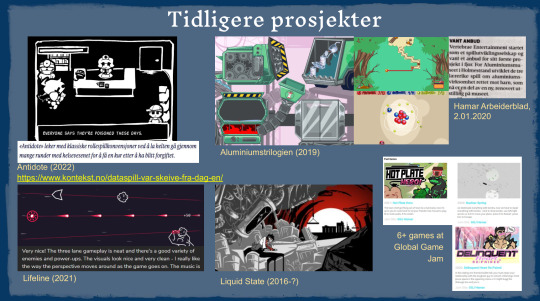
(screenshot from a presentation we sent to a funding org)
All in all that adds up to 18 and a half games. Roughly speaking. The smallest gamejam games have been opportunities to try new things and experiment with features we haven't touched before, the browser games demanded optimization to make performance good enough to run in browser, the edutainment games tested our ability to work under pressure with hard deadlines, and Liquid State gave us a clearer idea of what works and doesn't work when working on a big long term project. They have also given us a backlog of previous works to pull from when developing new games. Not just in terms of lessons learned and getting used to workflows, but also straight up pulling bits of reusable code here and there.
I'm Åge by the way. This blogpost is mainly written from my point of view as a programmer and is going to be focused on programming. But I asked Hauk and he let me know the following:
Liquid State in particular had a big impact on Fangst's animations. Liquid State used traditional animation for the main character and puppet based animation for enemies, which gave him experience with both forms of animation and a clearer idea of how to make effective individual frames with good poses and how to polish the puppets.


Left: Liquid State. Right: Fangst wip sketch.
As for programming, here are some examples of reused/informed code.
Stepping Stone is a 2D platformer that required somewhat competent collision and input code. It was meant to be a frustrating experience to play through, but the frustration was supposed to be built on the repetitiveness of the gameplay not on things outside of the player's control like clipping through walls or not jumping when you wanted to. I spent much of the game's development tweaking the player controls and collision code, and this got ported into Fangst as the beginning of the main character's movement code before adding some of Liquid State's player physics.

Throughout 2021 I spent some time on an unreleased project with a top down camera titled No Future Towers. I made a twitter thread about my process here. I wanted the buildings to have depth to them so I made a fake 3D effect with 2D parallax but it was kind of a pain to work with. Then I read a blogpost by Matharoo about GameMaker's built in 3D camera features. I ended up using this for the 3D effect in that project, and then reused that effect in Fangst to quickly set up depth without having to program in layer parallax manually.


No Future Towers also had an ocean theme with a soundscape of seagulls and crashing waves and creaking wood. I threw this soundscape together with royalty free sound loops, and then ported the sounds into Fangst for some placeholder atmosphere to test the vibes before getting a sound designer on board.
Liquid State had a pretty dramatic impact on Fangst. One of the reasons we're confident in having combat in a game that has a lot of moving parts already is because we've been able to port a lot. Liquid State was a combat focused beatemup, which required things like hitboxes that can remember who they're allowed to target and who they've already collided with, spawning hitboxes at specific positions in specific frames of an animation, changing the hurtbox of the player on the fly, enemies getting stunned while in knockback, and basic enemy AI. This carries over pretty directly to Fangst, so the lucky few who got to try early demos of Liquid State back in 2017-2019 may recognize some of the overall feel.

Liquid State's camera also makes a return. Most of the pain points in the previous camera blogpost were lessons I learned during Liquid State and I managed to reuse some of the equations for following the player/moving ahead of the player.
Fangst is made with GameMaker Studio 2, now formally known as just GameMaker. I previously worked with GameMaker Studio 1.4 (oh how I miss you, old sprite editor) but when GMS2 came out I knew I had to transition over to the new version eventually despite my stubbornness. GMS2 is a pretty substantial rework of the engine with a lot of changes under the hood and a different workflow, which means a lot of frustration and wasted time in the transition period. We ended up doing the switch to GMS2 when we started working on educational games for Aluminiummuseet, figuring that we'd need to overhaul our workflow anyway. Getting this pain point out of the way early made it a lot easier to continue using GMS2 for later games, and let me build up a backlog of useful GMS2 scripts for major changes like window resizing, the layer system, etc.

The Aluminiummuseet games ran on Android devices and the browser games ran on, well, the web browser. These platforms are much weaker than the average PC and have various quirks of their own, requiring a lot of consideration of how to make sure the game runs as optimally as possible and avoiding platform-specific bugs. This is evident in the games themselves, the latest games run better than the oldest games. I had to look into things like ordering sprites so they're packed on the same texture page, avoiding transparency on backgrounds when viable, and using the debugger to find out where the game loses the most performance. This has informed how I program things going forward.
And finally, Antidote had a big impact on how text is structured in-game. Antidote is a very text-heavy game with a lot of dialogue boxes, and we originally planned on having a Norwegian language option in addition to the existing English language text. This meant that the game's text had to be saved in a way that made it easy to access, because having text hard-coded in and spread out across many different objects would make it a pain to keep track of and would waste everyone's time when it was time to edit/translate it and it would also risk weird edge-cases where it pulls the wrong language's text. So I programmed it in a way where all textboxes pull dialogue from this one big script that holds all the dialogue in one place. This type of text system serves as the base for text in Fangst as well.


These were some examples of wholesome program cannibalization, and I can't wait to see what we end up cannibalizing from Fangst in the future.
We plan on coming back to the office and resuming work next week. Thanks for reading!
Love, Åge
8 notes
·
View notes
Text
NCIS: Sydney has found its agents.
The decades-old franchise’s debut international version for Paramount+ and Network 10 will see Olivia Swann (DC’s Legends of Tomorrow ) play NCIS Special Agent Michelle Mackey and Spartacus: War of the Damned’s Todd Lasance lead as Sergeant Jim “JD” Dempsey.
The duo are joined by Sean Sagar (The Covenant, Mea Culpa) as NCIS Special Agent, DeShawn Jackson; Tuuli Narkle (Mystery Road: Origin, Bad Behaviour) as AFP Liaison Officer, Constable Evie Cooper; Mavournee Hazel (Shantaram, Halifax: Retribution) as AFP Forensic Scientist, Bluebird ‘Blue’ Gleeson and William McInnes (The Newsreader, Total Control) as AFP Forensic Pathologist, Dr Roy Penrose.
Produced by Endemol Shine Australia, NCIS: Sydney is currently filming in the Australian harbor city and will launch later on Paramount+ and the Australian broadcaster. It will follow the eclectic team of U.S. NCIS Agents and the Australian Federal Police (AFP), who are grafted into a multi-national taskforce to keep naval crimes in check in the most contested patch of ocean on the planet.
Paramount Australia and New Zealand Head of Drama Rick Maier said “one of the best-loved franchises in the world is in the hands of one of our best production companies.”
“NCIS: Sydney is exciting for all of us at Paramount and we hope one of the most eagerly anticipated commissions of the year,” he added.
Lindsey Martin, CBS Studios’ Head of International Co-Productions and Development, said: “We are thrilled to be expanding the NCIS franchise, one of our most powerful and iconic television IPs, across borders and into Australia.”
NCIS: Sydney was first floated last year and is produced for CBS Studios and Paramount Australia by Endemol Shine Australia, and distributed outside Australia by Paramount Global Content Distribution.
NCIS, which stands for Naval Criminal Investigative Service, launched 20 years ago and has since been expanded across the U.S. with versions in Los Angeles, New Orleans and Hawaii.
5 notes
·
View notes
Text
California State Senator Ben Allen represents the 24th Senate District, covering the Westside, Hollywood, South Bay, and Santa Monica Mountains communities of Los Angeles County. Ben was first elected in 2014 and is now serving his third and final term in the State Senate.
Ben chairs the Senate's Environmental Quality Committee and co-chairs the Legislature's Environmental Caucus, is a member of the Legislative Jewish Caucus, chairs the Legislature's Joint Committee on the Arts, and the Senate Select Committee on Aerospace and Defense. He previously served as Chair of the Education Committee (2017-2019) and Chair of the Elections and Constitutional Amendments Committee (2015-2016).
Ben has thrown himself into the important work of state government, focusing on wise decision-making and pushing for reforms that address systemic inadequacies in our state. He has authored nearly 60 new laws in various areas, from environmental protection to electoral reform.
During his first two terms in the Senate, fighting the climate crisis and protecting our state's precious natural resources have been among Ben's top priorities. CalMatters recently recognized him as one of the Legislature's foremost leaders in the field of environmental protection. He authored SB 54, groundbreaking legislation to address plastic pollution, which Governor Newsom signed into law to international acclaim. The New York Times called SB 54 "the most sweeping restrictions on plastics in the nation" and suggested the legislation is "another route for curbing carbon emissions and trying to sidestep the worst consequences of global warming" after the Supreme Court gutted the federal government's power to regulate carbon emissions. As Chair of the Senate Environmental Quality Committee, Ben worked with his colleagues to pass a powerful climate package requiring the state to become carbon-neutral by 2045 and produce 90% of its electricity from clean sources by 2035, among other measures. A member of the Ocean Protection Council and Coastal Conservancy, he has led a successful effort to phase out a dangerous carcinogen in firefighting foam, crafted a compromise to phase out destructive trawling gear, and brokered a major compromise that lessened the environmental impact of off-highway vehicle use at state facilities. "If only Congress could work out such compromises," wrote the Sacramento Bee editorial board about the bill.
Among his efforts to reform California campaign finance and elections laws, Ben authored the landmark Voter's Choice Act of 2016 to implement more flexibility in how and where to vote, creating the vote center model used in the 2020 elections, which resulted in significantly increased voter turnout. Ben also has been a leader for campaign transparency, and was a leader in passing the Disclose Act and Petition Disclose Act and other transparency measures that have dramatically improved the disclosure of donors to political causes for the public. The California Clean Money Campaign has routinely ranked him top in the Legislature for his commitment to clean money political reform.
An advocate for the Golden State's continued leadership in arts and entertainment, Ben is a member of the California Film Commission. He was part of a legislative effort to extend the Film & TV Tax Credit Program to further support and invest in California’s unrivaled film industry. Ben also authored the law that reinstated teaching credentials for theatre and dance educators, and he continues to fight for expanded access to the arts in schools and underserved communities. Ben has been a champion for science and was a joint author of the state's groundbreaking law that increased vaccination rates among school children.
Prior to his election to the Senate, Ben served as President of the Santa Monica-Malibu Unified School District Board of Education, lecturer at UCLA Law School, and worked as an attorney at the law firms of Bryan Cave LLP and Richardson & Patel and at the nonprofit Spark Program. While at law school, Ben served as the voting student member of the University of California Board of Regents and was a summer judicial clerk with the United Nations International Criminal Tribunal for Rwanda. Prior to law school, Ben worked in Washington DC for the Latin American team of the National Democratic Institute for International Affairs (NDI), and then as Communications Director for Congressman Jose Serrano (D-NY).
Ben grew up in the 24th Senate District and attended public schools, graduating from Santa Monica High School in 1996. His father, Michael, spent his career on the English Department faculty at UCLA and mother, Elena, was a public school teacher and artist who served as Chair of the Santa Monica Arts Commission. Ben has a Bachelor of Arts degree magna cum laude in History from Harvard University; a Master's degree in Latin American Studies from the University of Cambridge; and a Juris Doctor degree from UC Berkeley. Fluent in Spanish, Ben is a Senior Fellow with the international human rights organization Humanity in Action, an Aspen Institute-Rodel Fellow, a Truman National Security Project Fellow, and a graduate of the Jewish Federation's New Leaders Project. He and his wife Melanie, an attorney, have a little son, Ezra.
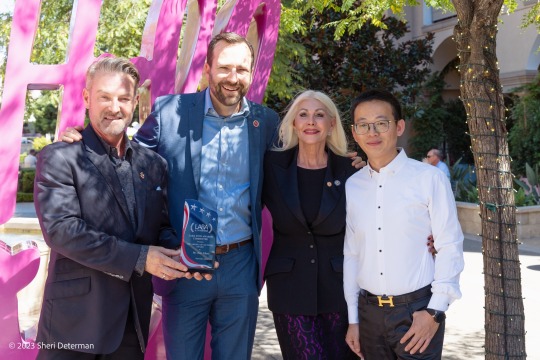
3 notes
·
View notes
Note
i wish my mastercard approval services worked so i could make a commission but they never make the call something must be wrong with it
anyways i'll leave this to be considered: a prince of void's land of tides and dread [where the entire land is flooded save for the prince's house and all the consorts have to survive on ships that are consistently being assaulted by the denizen minions and you could say the prince's quest would be to drain the global ocean]
Aw, that sucks, dude
That sounds like a fun land though! Deep sea horrors and high sea nightmares is like, perfect for a prince land
Not sure how you drain a global ocean though? Maybe volcanic vents or something to make it all steamy and cloudy??
6 notes
·
View notes
Video
International Sea Level Satellite Spots Early Signs of El Niño Kelvin waves, a potential precursor of El Niño conditions in the ocean, are rolling across the equatorial Pacific toward the coast of South America. The most recent sea level data from the U.S.-European satellite Sentinel-6 Michael Freilich indicates early signs of a developing El Niño across the equatorial Pacific Ocean. The data shows Kelvin waves – which are roughly 2 to 4 inches (5 to 10 centimeters) high at the ocean surface and hundreds of miles wide – moving from west to east along the equator toward the west coast of South America. When they form at the equator, Kelvin waves bring warm water, which is associated with higher sea levels, from the western Pacific to the eastern Pacific. A series of Kelvin waves starting in spring is a well-known precursor to an El Niño, a periodic climate phenomenon that can affect weather patterns around the world. It is characterized by higher sea levels and warmer-than-average ocean temperatures along the western coasts of the Americas. Water expands as it warms, so sea levels tend to be higher in places with warmer water. El Niño is also associated with a weakening of the trade winds. The condition can bring cooler, wetter conditions to the U.S. Southwest and drought to countries in the western Pacific, such as Indonesia and Australia. The Sentinel-6 Michael Freilich satellite data shown here covers the period between the beginning of March and the end of April 2023. By April 24, Kelvin waves had piled up warmer water and higher sea levels (shown in red and white) off the coasts of Peru, Ecuador, and Colombia. Satellites like Sentinel-6 Michael Freilich can detect Kelvin waves with a radar altimeter, which uses microwave signals to measure the height of the ocean’s surface. When an altimeter passes over areas that are warmer than others, the data will show higher sea levels. “We’ll be watching this El Niño like a hawk,” said Josh Willis, Sentinel-6 Michael Freilich project scientist at NASA’s Jet Propulsion Laboratory in Southern California. “If it’s a big one, the globe will see record warming, but here in the Southwest U.S. we could be looking at another wet winter, right on the heels of the soaking we got last winter.” Both the U.S. National Oceanic and Atmospheric Administration (NOAA) and the World Meteorological Organization have recently reported increased chances that El Niño will develop by the end of the summer. Continued monitoring of ocean conditions in the Pacific by instruments and satellites such as Sentinel-6 Michael Freilich should help to clarify in the coming months how strong it could become. “When we measure sea level from space using satellite altimeters, we know not only the shape and height of water, but also its movement, like Kelvin and other waves,” said Nadya Vinogradova Shiffer, NASA program scientist and manager for Sentinel-6 Michael Freilich in Washington. “Ocean waves slosh heat around the planet, bringing heat and moisture to our coasts and changing our weather.” More About the Mission Sentinel-6 Michael Freilich, named after former NASA Earth Science Division Director Michael Freilich, is one of two satellites that compose the Copernicus Sentinel-6/Jason-CS (Continuity of Service) mission. Sentinel-6/Jason-CS was jointly developed by ESA (European Space Agency), the European Organisation for the Exploitation of Meteorological Satellites (EUMETSAT), NASA, and NOAA, with funding support from the European Commission and technical support on performance from the French space agency CNES (Centre National d’Études Spatiales). Spacecraft monitoring and control, as well as the processing of all the altimeter science data, is carried out by EUMETSAT on behalf of the European Union’s Copernicus programme, with the support of all partner agencies. JPL, a division of Caltech in Pasadena, contributed three science instruments for each Sentinel-6 satellite: the Advanced Microwave Radiometer, the Global Navigation Satellite System - Radio Occultation, and the Laser Retroreflector Array. NASA also contributed launch services, ground systems supporting operation of the NASA science instruments, the science data processors for two of these instruments, and support for the U.S. members of the international Ocean Surface Topography Science Team. IMAGE....This animation shows a series of waves, called Kelvin waves, moving warm water across the equatorial Pacific Ocean from west to east during March and April. The signals can be an early sign of a developing El Niño, and were detected by the Sentinel-6 Michael Freilich sea level satellite. Credit: NASA/JPL-Caltech
5 notes
·
View notes
Photo
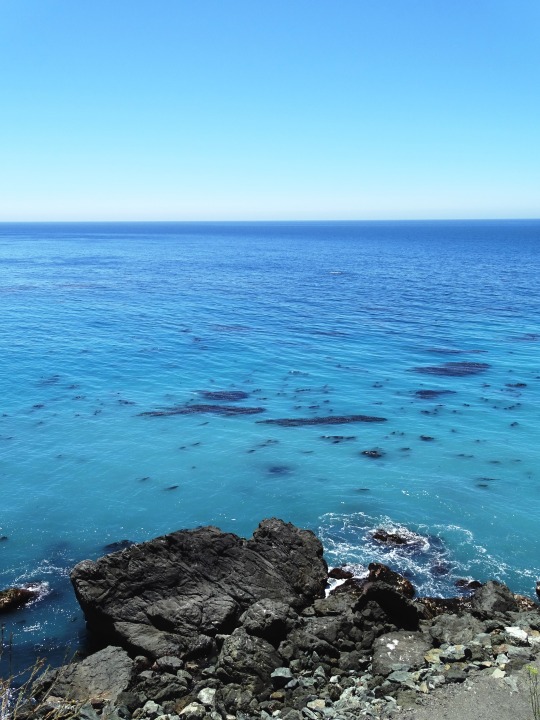


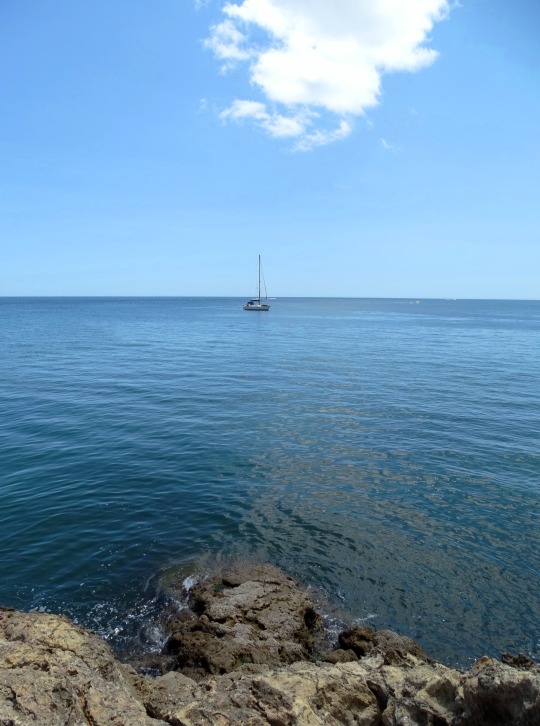
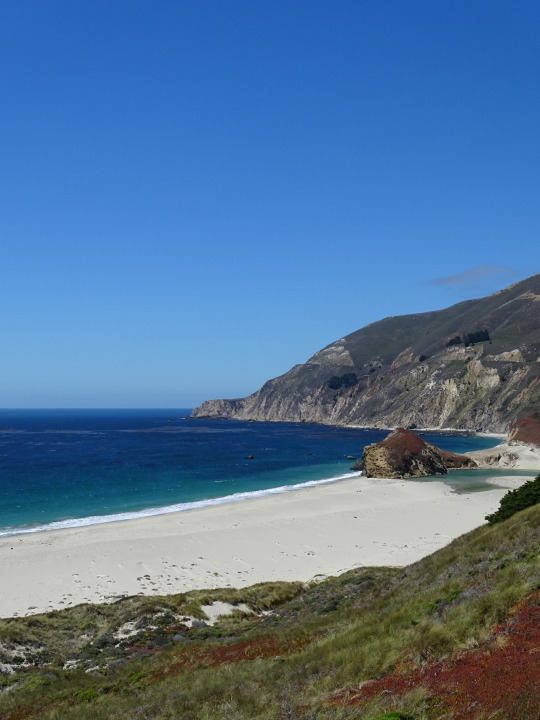

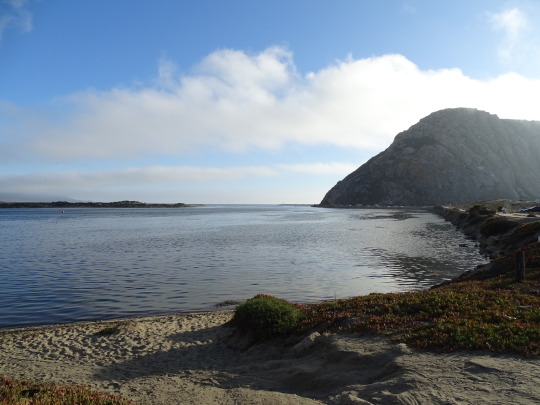
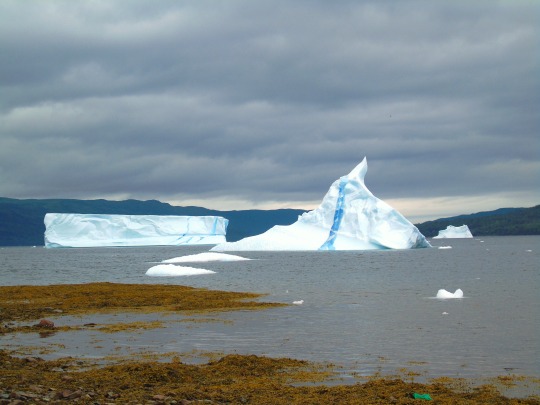
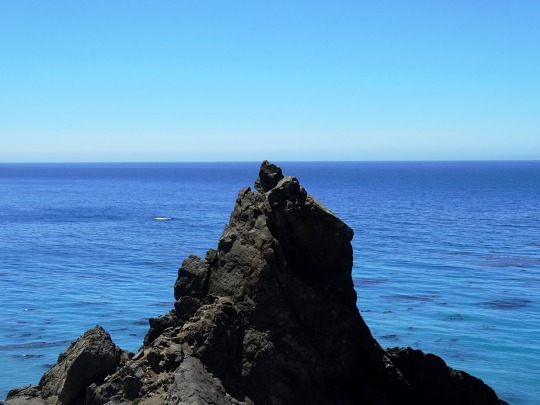
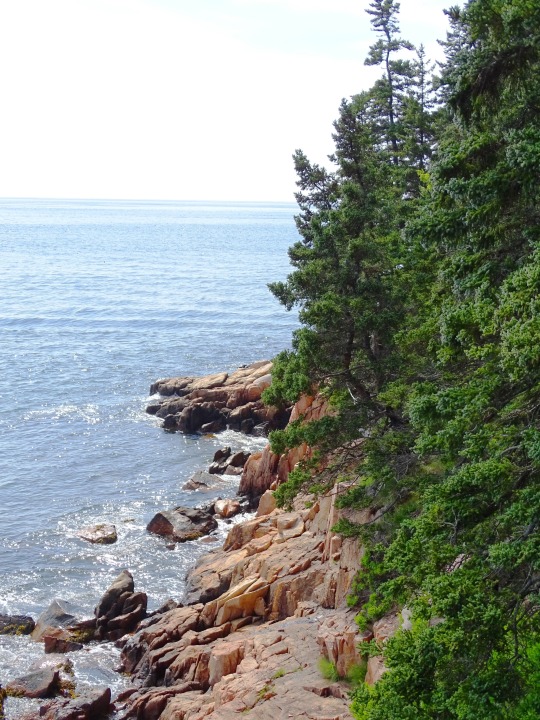
World Oceans Day
With oceans making up 66% of our Earth, it’s crucial we raise awareness about and tackle the threats facing these life-giving and life-containing bodies of water.
66% of the world is covered in a blanket of rich, vibrant blue, from its depths once came all life on the Earth, and it continues to house an immense amount of life. This blanket is the world’s oceans, and they serve as one of the most popular vacation spots in the world and play a vital role in the economy of countries worldwide. Across the briny deep massive amounts of cargo cross each year, and it still serves as the primary thoroughfare for trade. World Oceans Day celebrates the ocean and the important role it plays in our lives.
It’s a time for supporters of the oceans to focus on conversation and sustainability so that they can remain clean and usable. The animals deserve a happy and safe place to roam and live without having to worry about any destruction or man-made obstacles. It’s important to safeguard the oceans to help ensure a healthy home for all. One this day, people can come together to create a space for all to enjoy and appreciate, no matter where each person lives.
History of World Oceans Day
In 2008, the UN gathered and uniformly created World Oceans Day. It was first proposed in 1992 in Rio de Janeiro during the Earth Summit. The ocean has been an incredibly important part of human history, and this special was established with the intent of celebrating our connection to the sea and raising awareness about the various dangers it faces. There are nearly 200,000 identified species that live in the ocean, but the number of actual species that reside there is likely in the millions. It’s essential to ensure that they don’t have to worry about freely getting around and enjoying a healthy and safe home to reside.
Even with that being the case, there are still problems with overfishing, and the subsidies that are given for fishing in countries all around the world are causing depletion of the game species. These activities have led to efforts to restore the fishing industry being undermined, and the industry bringing in $50 billion a year less. It’s just one of the many factors that should have us all celebrating World Oceans Day and raising awareness about all the issues our big blue’s face.
There’s a global environmental catastrophe due to decades of overuse and a surge in single-use plastics. Plastic straws and bags are getting into the oceans and causing havoc. World Oceans Day is an opportunity to acknowledge and recognize the efforts that have been and are being made against plastic pollution. It’s enlightening and disheartening to know that today, 13,000,000 tons of plastic leaks into the ocean every year, which among other damage, kill 100,000 marine animals annually.
World Oceans Day Timeline
1987 Brundtland Report
This report, connected to The World Commission on Environment and Development (Brundtland Commission) notes that the ocean sector is lacking representation compared to other sectors.
1992 Earth Summit in Rio de Janeiro
Created as a way to celebrate the world’s shared ocean and raise awareness for the personal connection between humans and the ocean. This is where the concept for World Oceans Day was first proposed by the Canadian representatives.
2008 UN declares to recognize World Oceans Day
This year, after a four-year onsite and online petition drive, the UN General Assembly passes a Declaration that will officially recognize the day, beginning the following year.
2009 First World Oceans Day is celebrated
The inaugural World Oceans Day is observed with the theme “Our Oceans, Our Responsibilities.”
2016 World Oceans Day Youth Advisory Council is launched
Made up of 25 youth from all over the world, the Youth Advisory Council is created to develop and promote World Oceans Day.
Why celebrate World Oceans Day?
It’s a good reminder to bring attention to the fact that oceans play a major role in everyday life all around the globe. The oceans provide a majority of the oxygen we breathe, so many consider them to be the lungs of our planet. The goal is to develop a worldwide movement of citizens to care better for the oceans. It’s an opportunity to inform and educate humans and the public of what our actions are doing to the ocean and what impact they have in the long run. It’s not only a day to celebrate the beauty, wealth, and promise of the ocean, but a chance to realize that they’re a critical part of the biosphere. They’re a significant source of food and medicines and simply can’t be ignored or mistreated any longer.
How to celebrate World Oceans Day
Start it off by a visit to the nearest ocean to restore a personal connection to the sea. Breathe deep and appreciate the beauty and serenity the ocean offers each day of the week. Invite family along, and while there, bring information about the ocean and what people really need to know about it to make visiting it a joy for years to come.
Pick a day to go to the ocean to clean up and help restore it instead of simply sitting by it. Gather friends and family and pitch in and pick up trash that surrounds the local beaches and oceans in the area. It’ll not only look nicer, but the wildlife in the area will benefit from these actions as well. Avoid single-use plastics, and instead pack a picnic lunch with reusable containers to enjoy after the hard work is complete. One may also consider organizing a fundraiser to aid preservation and restoration efforts at the local beach. With all the plastic waste coming off our beaches thanks to careless beach-goers, our ocean is awash with litter.
Use this as a time to increase one’s knowledge and explore the topic further. There are a variety of books and resources out there to help a person achieve this goal. Another idea is to gather a group of people and watch an ocean film on the topic to bring awareness to the concept of helping out the oceans.
There are plenty of activities and events that occur on World Oceans Day. Celebrate by choosing one or two to participate in and enjoy. Engage in the day’s events by piggybacking off of other ideas that people in the area have come up with instead of having to think of activities alone.
World Oceans Day FAQs
When is World Oceans Day?
World Oceans Day has taken place on June 8 every year since 2009, with the inaugural theme of Our Oceans, Our Responsibilities.
What is the importance of World Oceans Day?
The purpose of this day is to develop a worldwide movement of citizens for the ocean while mobilizing people and raising awareness.
What is the World Oceans Day theme?
Each year, the theme for World Oceans Day changes, with past themes including Oceans & People, Healthy Oceans–Healthy Planet, Our Oceans–Our Future, and Innovation for a Sustainable Ocean.
Who started World Oceans Day?
World Oceans Day was first suggested by Canada in 1992 at the Earth Summit in Rio. After years of petitions, the UN officially recognizes the day.
How to help with World Oceans Day?
This day can be observed by getting involved in education, reducing carbon footprints, minimizing the use of plastic and making sustainable seafood choices.
Source
#Mussel Rock Park#Morro Rock State Preserve#Morro Bay#Pacific Ocean#Big Sur#California#West Coast#Atlantic Ocean#As Catedrais Beach#Spain#Albufeira#Portugal#Miami Beach#Acadia National Park#iceberg#Green Bay#King's Point#Newfoundland#Canada#seascape#landscape#cityscape#travel#vacation#World Oceans Day#WorldOceansDay#8 June#Maine#Florida#East Coast
2 notes
·
View notes
Text
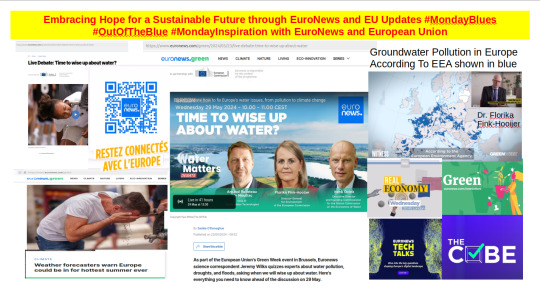
Article: Live Debate: Time to wise up about water? #euronews #EU #EuropeanCommission https://www.euronews.com/green/2024/05/23/live-debate-time-to-wise-up-about-water
ArticleSummary: "Upcoming Euronews Water Resilience Debate, happening at the European Union's Green Week event in Brussels, kicking off at 10am CET on 29 May, 2024. Hosted by Euronews science correspondent Jeremy Wilks, the debate will feature three experts: Dr. Florika Fink-Hooijer (Director-General of the Environment Department of the European Commission), Henk Ovink (Executive Director of the Global Commission on the Economics of Water), and Arnaud Valleteau de Moulliac (CEO of Veolia Water Technologies). Topics for discussion include water quality in urban areas, the balance between agricultural, industrial, and domestic water use, recycling, regeneration, and desalination. The debate will also tackle nature-based solutions for drought and floods, the role of business in water resilience, and the impact of climate change. Audience questions will be addressed, covering issues like cross-border cooperation, investment in water quality, and the EU's capability in achieving sustainable water solutions and climate targets by 2030."
By #www.smukher2.com #www.smukher2.eu #www.smukher2.co.uk #www.smukher2.org #www.smukher2.net #smukher2 to #Everyone: #MondayBlues #OutOfTheBlue #MondayInspiration
The recent announcements by EuroNews and the European Union have sparked hope within me for our planet, Earth. This sense of hope was further fueled earlier today when I revisited #DameJaneGoodall's 'Book Of Hope'. It's inspiring to see a shared vision for a sustainable future for Mother Nature. I am eagerly anticipating the Green Week discussion scheduled for 29th May. In preparation, I came across an insightful presentation by #HansBruyninckx in 2022, who held the position of Executive Director at the European Environment Agency (EEA) from 2013 to 2023. https://youtu.be/x1kEuZBtkSY
Here are some more #euronews article and media links:
EuroNews https://www.euronews.com/
EuroNews Live https://www.euronews.com/live
EuroNews Video https://www.euronews.com/video
EuroNews Programmes https://www.euronews.com/programs
EuroNews Green https://www.euronews.com/green
EuroNews Green on Youtube https://www.youtube.com/channel/UCB8qu8bhAiV8BOJK9ERzZ3Q
EuroNews on Youtube https://www.youtube.com/@euronews
EuroNews on Dailymotion https://www.dailymotion.com/euronews-en
In addition to the aforementioned resources, I also follow a few other specialized resources on EuroNews from their 'EuroNews Programmes' list that I previously shared. These programs span various knowledge domains #wissenschaft and deliver information in a clear, jargon-free manner, making them not only informative but also enjoyable to engage with #fairwissenschaft:
Climate Now "We give you the latest climate facts from the world’s leading source, analyse the trends and explain how our planet is changing. We meet the experts on the front line of climate change who explore new strategies to mitigate and adapt." https://www.euronews.com/green/green-series/climate-now
The road To Green "Our reporter Cyril Fourneris takes you on a road trip across Europe to meet those who are finding solutions to the greatest environmental challenges of our time. Carbon neutrality, circular economy, zero pollution, biodiversity preservation… Get your backpack ready and every month, let's set off towards a greener planet" https://www.euronews.com/green/green-series/the-road-to-green
Ocean "Ocean explores the themes of pollution and marine life, the blue economy, sustainable fishing, aquaculture, climate change, ocean energy and more. We also look at the policies and projects designed to protect our seas." https://www.euronews.com/green/green-series/ocean
Euronews Tech Talks "uronews Tech Talks goes beyond discussions to explore the impact of new technologies on our lives. With explanations, engaging Q&As, and lively conversations, the podcast provides valuable insights into the intersection of technology and society." https://www.euronews.com/next/next-series/euronews-tech-talks
Real Economy "Real Economy focuses on the macroeconomic issues that shape our everyday lives, reporting on the ground, explaining the jargon, and looking for solutions that work." https://www.euronews.com/business/business-series/realeconomy
The CUBE The Cube is a team of specialist social media journalists who find, verify and debunk the biggest stories in real-time. They are on a mission to make sense of what is going on and explain why it matters to you. https://www.euronews.com/my-europe/europe-decoded/the-cube
0 notes
Text
Dubai, 10 December 2023 – Climate change is already having catastrophic impacts on many migratory animals and their ability to provide vital ecosystem services to humanity according to a major new report of the Convention on the Conservation of Migratory Species of Wild Animals (CMS), a UN biodiversity treaty.
Released today at the UN Climate Change Conference in Dubai (UNFCCC COP28), the report finds that the direct effects of climate change on many migratory species are already being seen, including poleward range shifts, changes in the timing of migration, and reduced breeding success and survival. Integral to the ecosystems they live in, migratory species support vital ecosystem services that both mitigate the impacts of climate change and increase the resilience to climatic hazards.
The study also emphasizes the urgent need to act now to help vulnerable migratory species adapt to a changing climate. Actions such as the establishment of comprehensive and well-connected networks of protected areas and other effective area-based conservation measures are crucial to support species movement in response to climate change, whilst direct human interventions, such as the translocation of vulnerable populations of species, will be needed in some cases.
Some of the key findings of the report include:
Strong evidence that global increases in temperature have affected most migratory species groups, and these impacts are mostly negative. For instance, rising temperatures are causing changes in the reproduction and survival of krill and are having a negative impact on marine mammals and seabirds that rely on krill as a key food source.
Strong evidence that climate change is impacting migratory species distribution and timing of migration. In particular, temperature increases are driving poleward range shifts and earlier migration and breeding. In some species, such as wading birds, there is a risk this will cause a mis-match between the timing of breeding and the time when prey species are most abundant.
Changes in water availability are causing the loss of wetlands and reduced river flows, which are likely to particularly impact the migration of fish and waterbirds.
Extreme climate-related events such as landslides are causing severe habitat destruction and have already been observed at some seabird breeding sites.
There is strong evidence that migratory seabirds and marine mammals will be impacted by the changes in oceanic currents which are likely to alter the nature and functioning of many marine and terrestrial ecosystems.
The study ‘Climate change and migratory species: a review of impacts, conservation actions, indicators and ecosystem services’ was commissioned by the Government of the United Kingdom of Great Britain and Northern Ireland through the Joint Nature Conservation Committee (JNCC) as a major contribution to the work of CMS on climate change, and prepared by the British Trust for Ornithology (BTO).
Biodiversity is declining globally at unprecedented rates, and climate change is one of the major drivers of this crisis. In 2021, the world’s leading biodiversity and climate scientists jointly sounded the alarm, stating that biodiversity loss and climate change mutually reinforce each other and neither will be successfully resolved unless both are tackled together. The Kunming-Montreal Global Biodiversity Framework adopted last year recognizes that nature-based solutions are essential in the fight against climate change in its Target 8. The conservation of migratory species and their habitats is an important part of the solution to both the biodiversity and the climate change crises.
Migratory species are important for ecosystem function and climate change mitigation, especially when they form a significant part of an ecosystem or aggregate in large numbers at particular times of the year. Many migratory species are related to the movement and dispersal of seeds and nutrients. Large migratory species can contribute to climate change mitigation through the decomposition of their faeces, which locks carbon into the soil or seabed, as well as through more complex processes, such as maintaining trophic webs that protect forest or seagrass beds important for carbon sequestration. Migratory species can also contribute towards climate change adaptation by enhancing ecosystem resilience; for example, seabird guano increases the nutrients available for coral reef growth, which in turn reduces coastal erosion.
The impacts of climate change on migratory species underscore the need for countries to cooperate on actions to ensure their conservation. CMS provides a vehicle for such cooperation, addressing migratory species across their range. By conserving migratory species and their habitat under CMS, countries can also achieve win-win solutions and directly contribute to the goals and targets of the Kunming-Montreal Global Biodiversity Framework and the Paris Agreement on climate change.
The launch of this major report comes in advance of the 14th meeting of the CMS Conference of the Parties, in Samarkand, Uzbekistan from 12 to 17 February 2024. This meeting will be one of the most significant global biodiversity gatherings since the adoption of the Kunming-Montreal Global Biodiversity Framework, and will address crucial conservation priorities, including priority actions to address climate change and its impacts on migratory species and their habitats.
2 notes
·
View notes